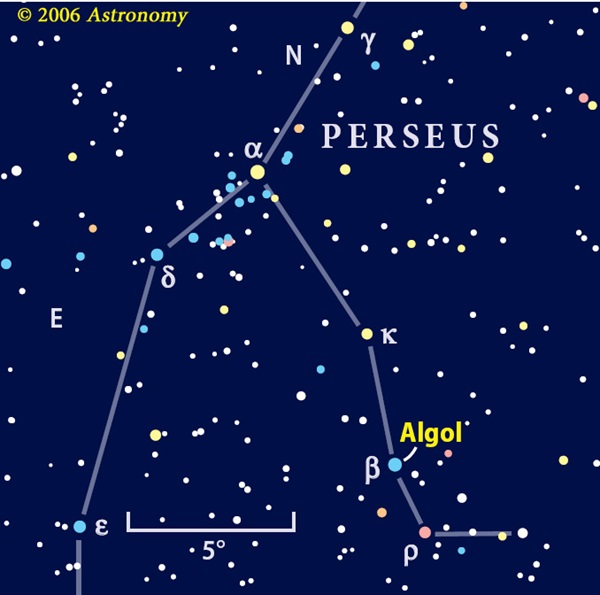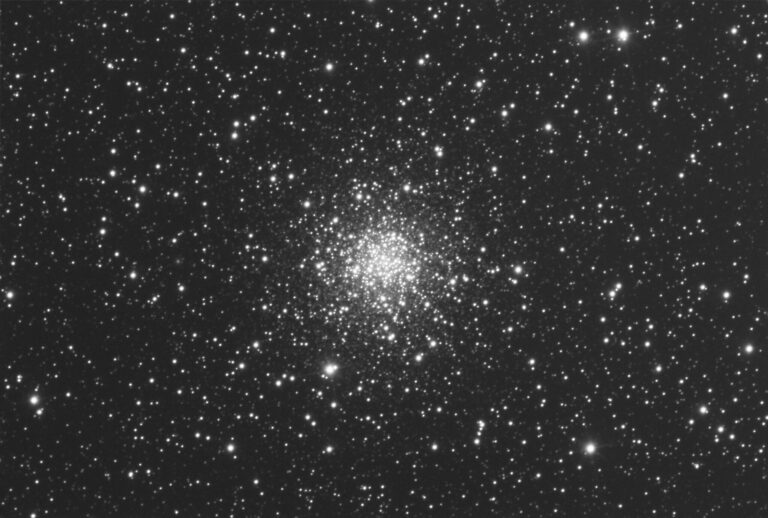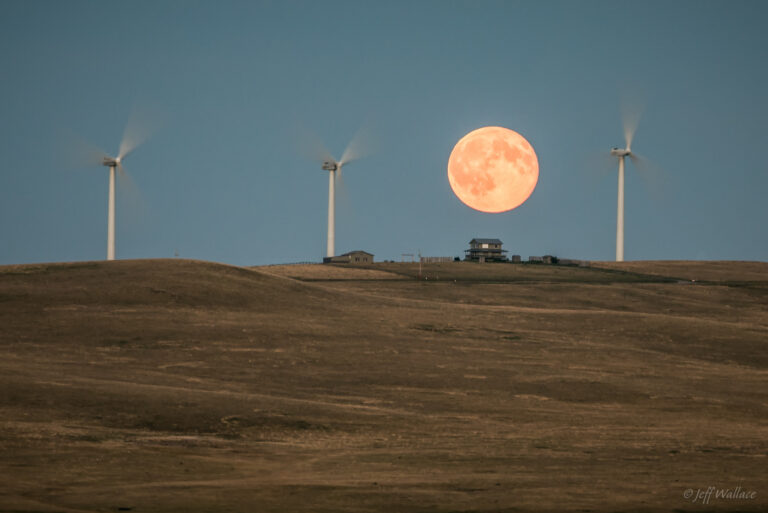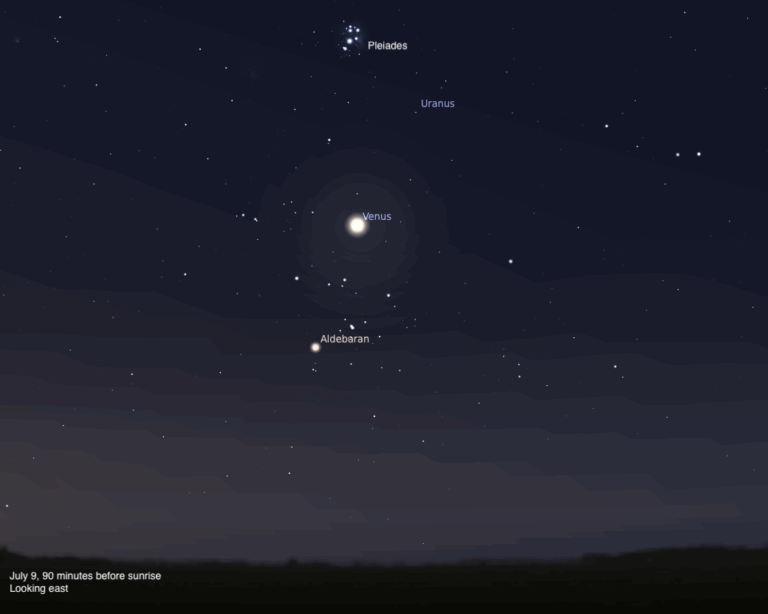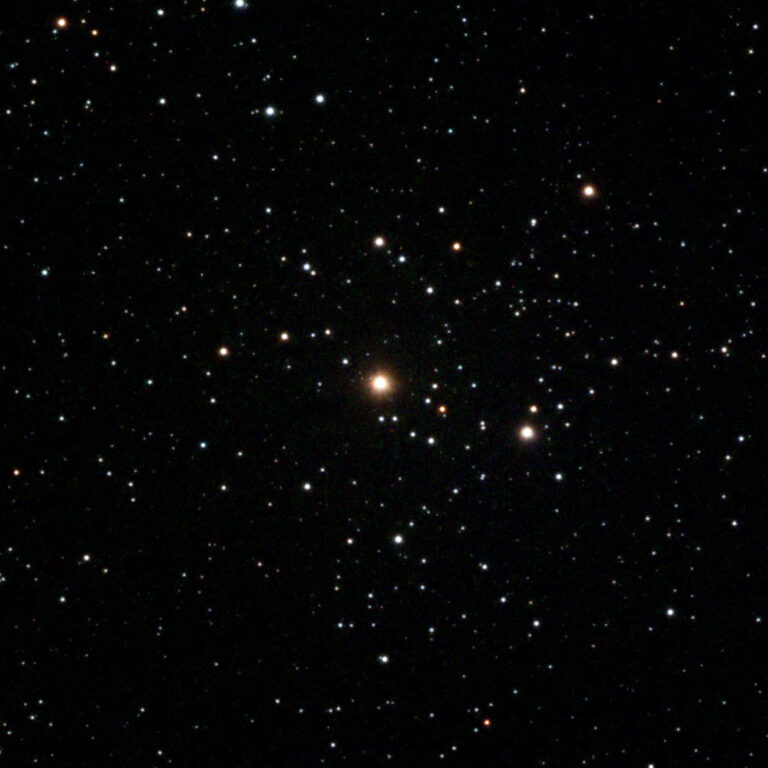Key Takeaways:
In its parent constellation, Algol represents the head of the mythical Medusa, a hideous snake-haired creature slain by Perseus. “Algol” comes from the Arabic Ra’s al Ghul, the “demon’s head.” Such sinister connotations suggest the ancients were aware of this star’s odd behavior and regarded it with suspicion. However, no evidence exists anyone officially described Algol’s variability until the late 17th century, when Italian astronomer Geminiano Montanari reported its brightness changes.
A century later, spectroscopic studies showed that Algol is a close, unequally bright binary system whose orbital plane is nearly edge-on to our line of sight. As a result, the fainter star periodically passes in front of the brighter one and produces an eclipse that dims the system’s brightness.
Beginning 3 hours before the predicted time of mid-eclipse, I compared Algol to nearby stars of known magnitude to get a brightness estimate. I recorded the date, time, and magnitude in my observing log. Every 15 minutes, I made a follow-up observation. At first, the changes were subtle, but as mid-eclipse approached, Algol faded precipitously. The return was just as rapid, and by the end of the 6-hour run, Algol had regained its former brightness.
If you’re not inclined to commit to a 6-hour observing run, try giving Algol a “quick look.” The evening before a scheduled eclipse, estimate its brightness. At the time of mid-eclipse the next night, give Algol another look. You’ll be surprised how much fainter it appears.
Questions, comments, or suggestions? E-mail me here.


